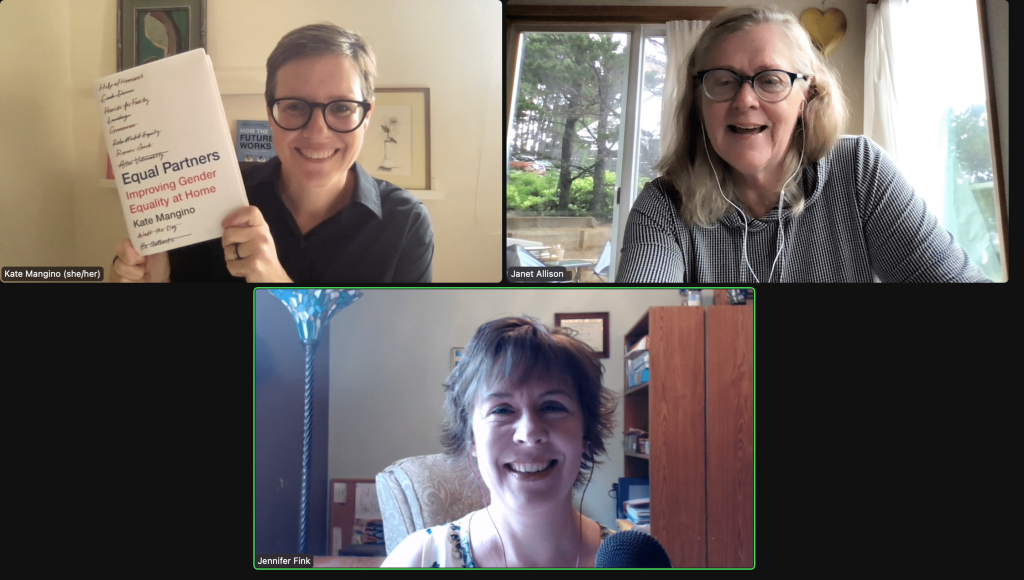Podcast: Play in new window | Download (Duration: 46:56 — 64.5MB)
Kate Mangino is right: “The last thing any working parent needs is to add ‘solve gender inequality’ to their to-do list.”
But if we don’t think about gender inequality in the home, we might end up unintentionally perpetuating it. After all, for most of our lives, females have been assumed to be the primary and “natural” caretakers of home and family, while males have been primarily expected to earn a living. Those roles are shifting, of course, but facts are facts: women still bear the brunt of household chores and do most caretaking.
Creating gender equality
“We’re talking about a social system that we’re all born into,” says Kate, a gender expert, mom of two, and author of Equal Partners: Improving Gender Equality at Home. “The way we raise boys and the toys that we give them and the values that we instill in them lead them to value income generation more than anything else.
“We have to recognize these ‘tracks’ we’re putting our kids on and break that cycle.”
Men who are equal partners in their homes and families are generally very satisfied with their lives. “I feel good about myself,” they told Kate. “and have a great relationship with my spouse. I have a great relationship with my kids.”
When we don’t teach boys the skills they need to be equal partners at home, we are unnecessarily limiting them.
Teaching boys to notice what needs to be done
“Noticing time” is a strategy Kate uses to teach her son and daughter the cognitive skills required to effectively manage a home.
“When I give my kids a chore list, they’re not going cognitive labor; I’m training my kids to be helpers,” she says. “Noticing time” is intended to help kids anticipate and plan for necessary tasks. Instead of telling her kids what to do, she instead sets a timer and asks them to figure out what needs to be done.
“The first time I tried this, it was a joke,” she admits. The family living room was a lived-in mess, complete with empty food containers and scattered silverware. But both kids thought the room looked fine. Over time, though, their ability to notice and act improved.
“They started to see what gets messy quickly,” Kate says. “They realized that the sink in their bathroom is often gross, so that’s a good starting point for them. Now, they know what to do and the house looks better. I’m getting both of them to the point where they’re capable of doing the cognitive labor” it takes to run a home and family.
In this episode, Jen, Janet, & Kate discuss:
- Ebbs and flows of gender equality at home
- Traditional “male” and “female” roles in the home
- How parenting practices affect gender equality
- Talking about household responsibilities
- Valuing caregiving
- How gender equality in the home benefits boys & men
- The “men’s glass ceiling”
- Maternal gatekeeping
- “Noticing time”
- Establishing family standards
- Giving boys opportunities to contribute
Links we mentioned (or should have) in this episode:
Equal Partners: Improving Gender Equality at Home, by Kate Mangino
The Equal Partner Quiz — mentioned at 22:35
Mom’s Hierarchy of Needs — mentioned at 19:01
Single Parenting with Wealthy Single Mommy Emma Johnson — ON BOYS episode
Need help with your boys?
Subscribe to Jen’s newsletter, Building Boys Bulletin
Join Janet Allison’s real-time, monthly group coaching program, Decoding Your Boy
Sponsor Spotlight: Dr. Mary Wilde’s Resilience School
Online, 8-week program that includes video lessons, a downloadable workbook, and ongoing membership to The Courage Circle, a private Facebook community where families can receive support and celebrate successes.

